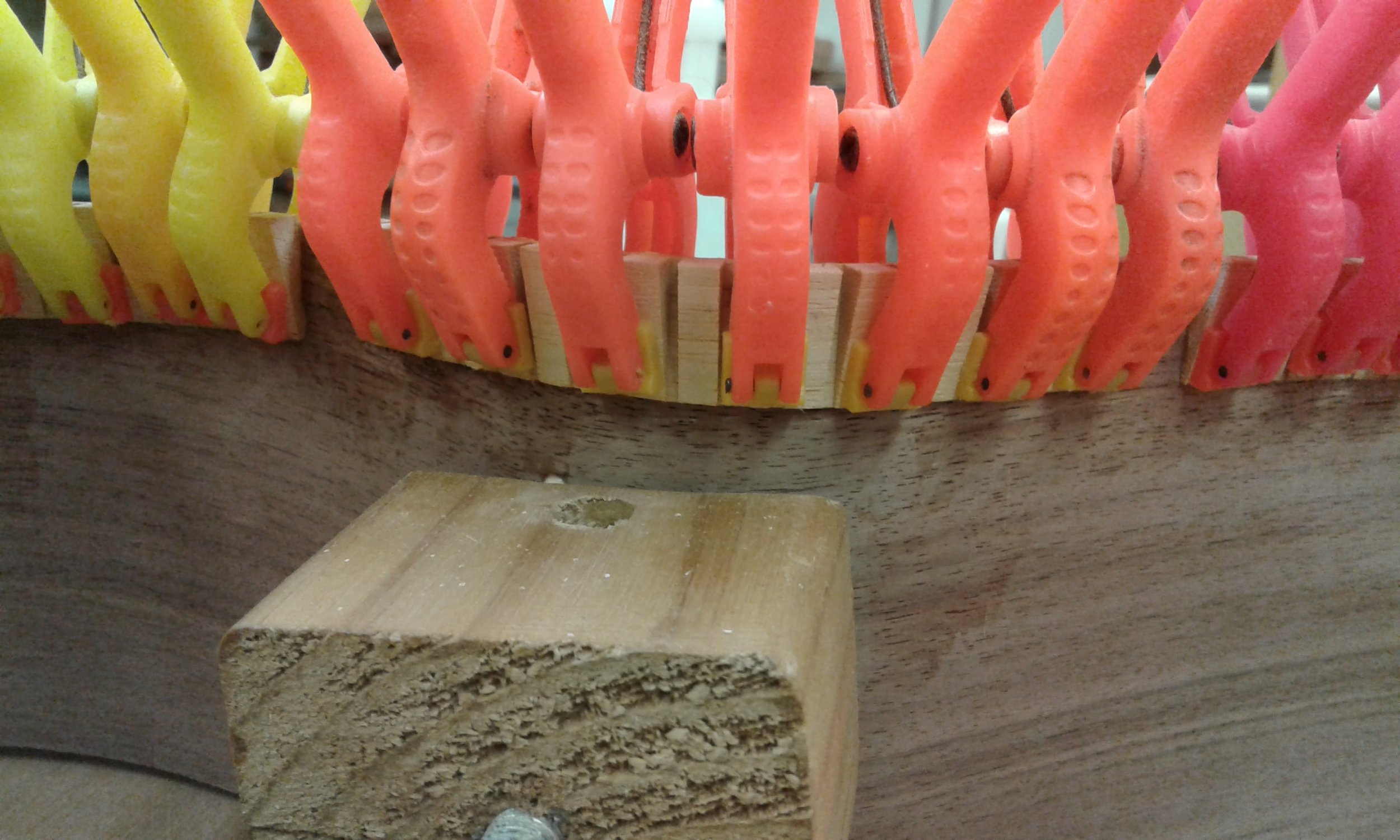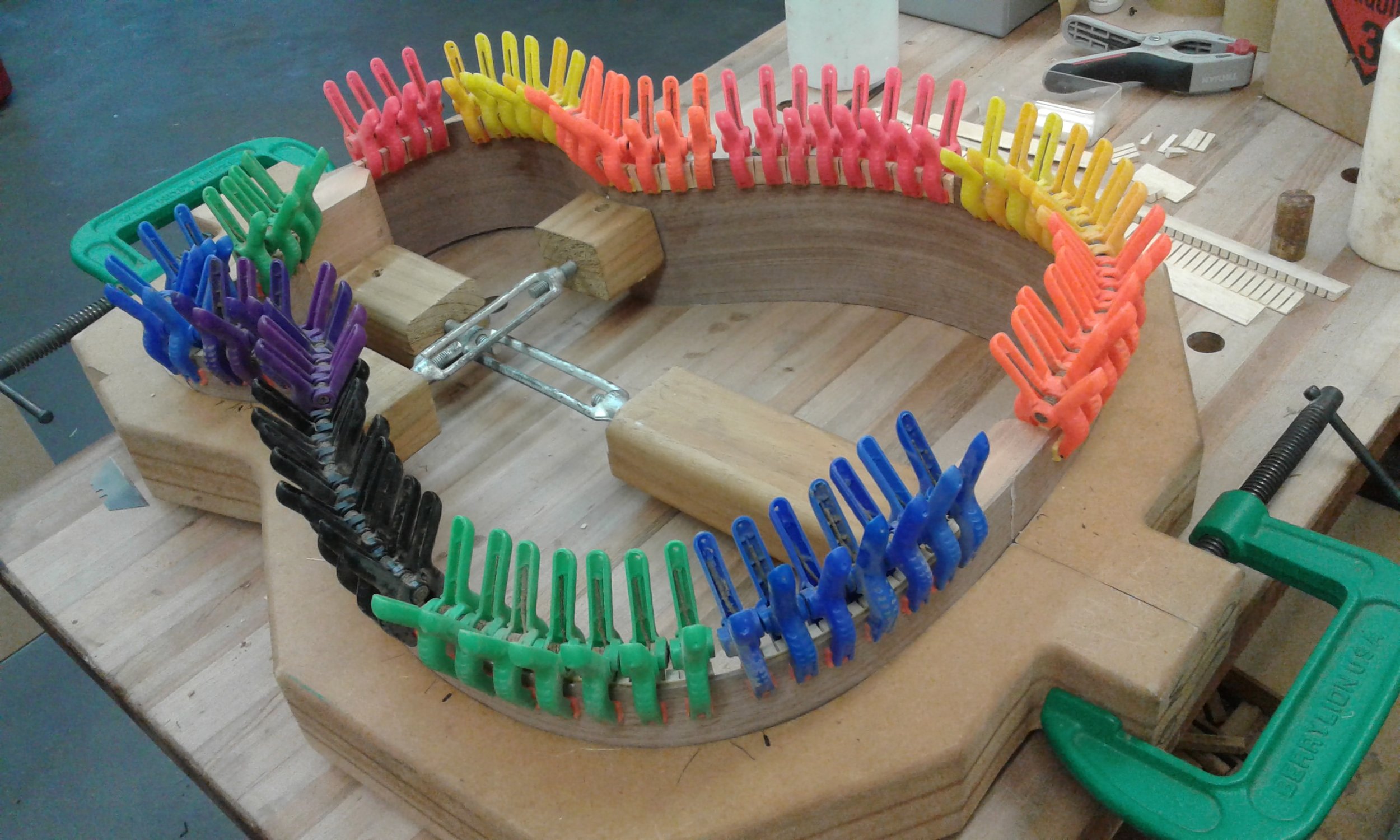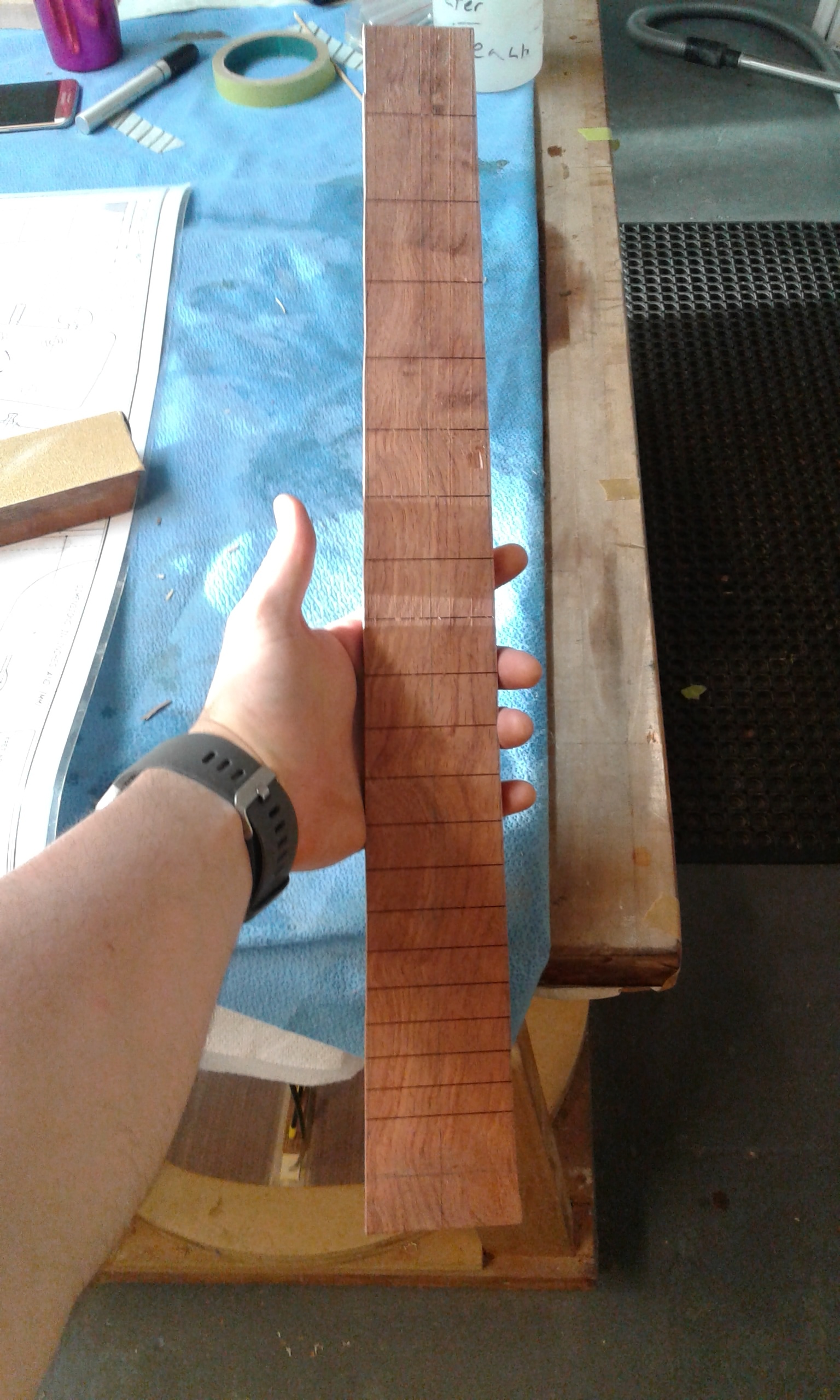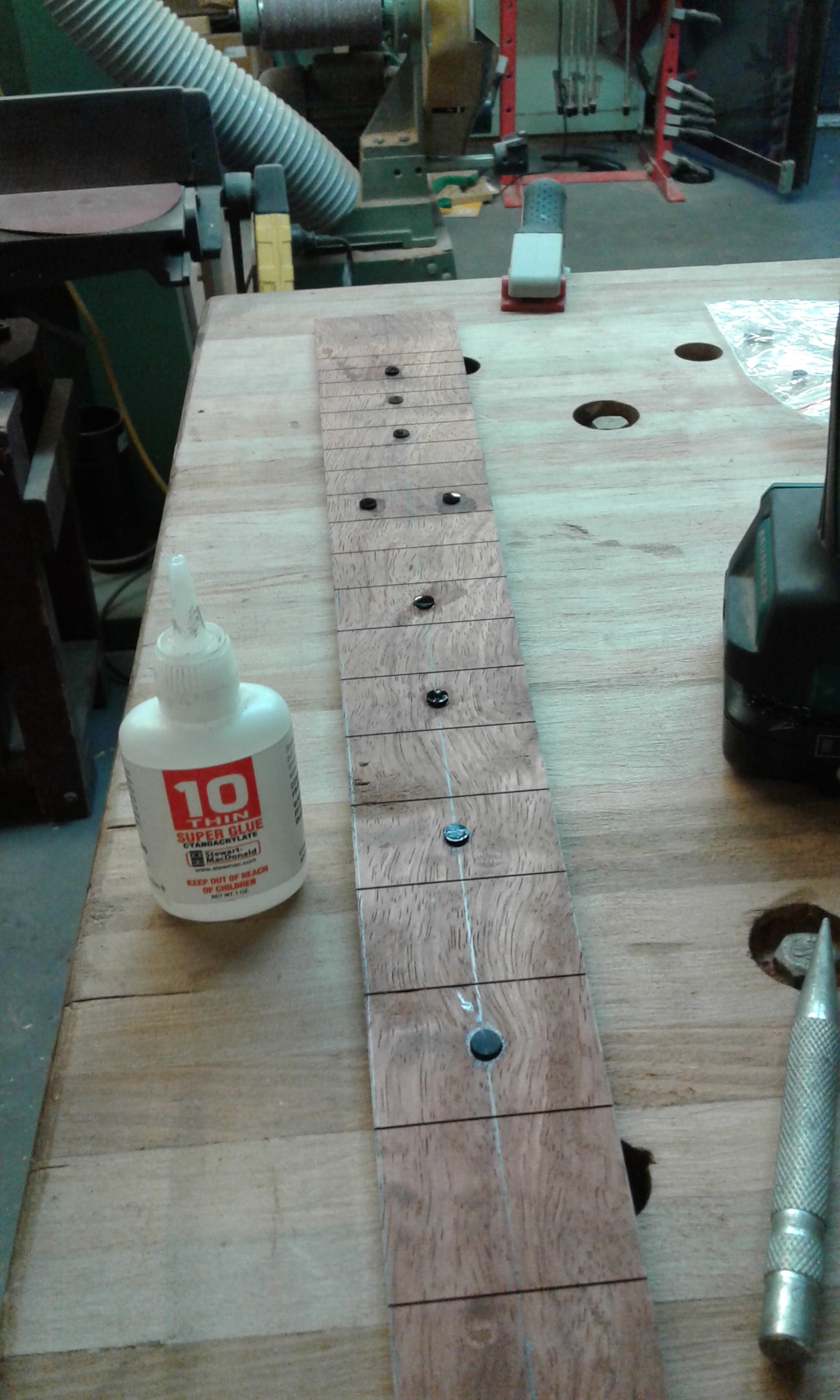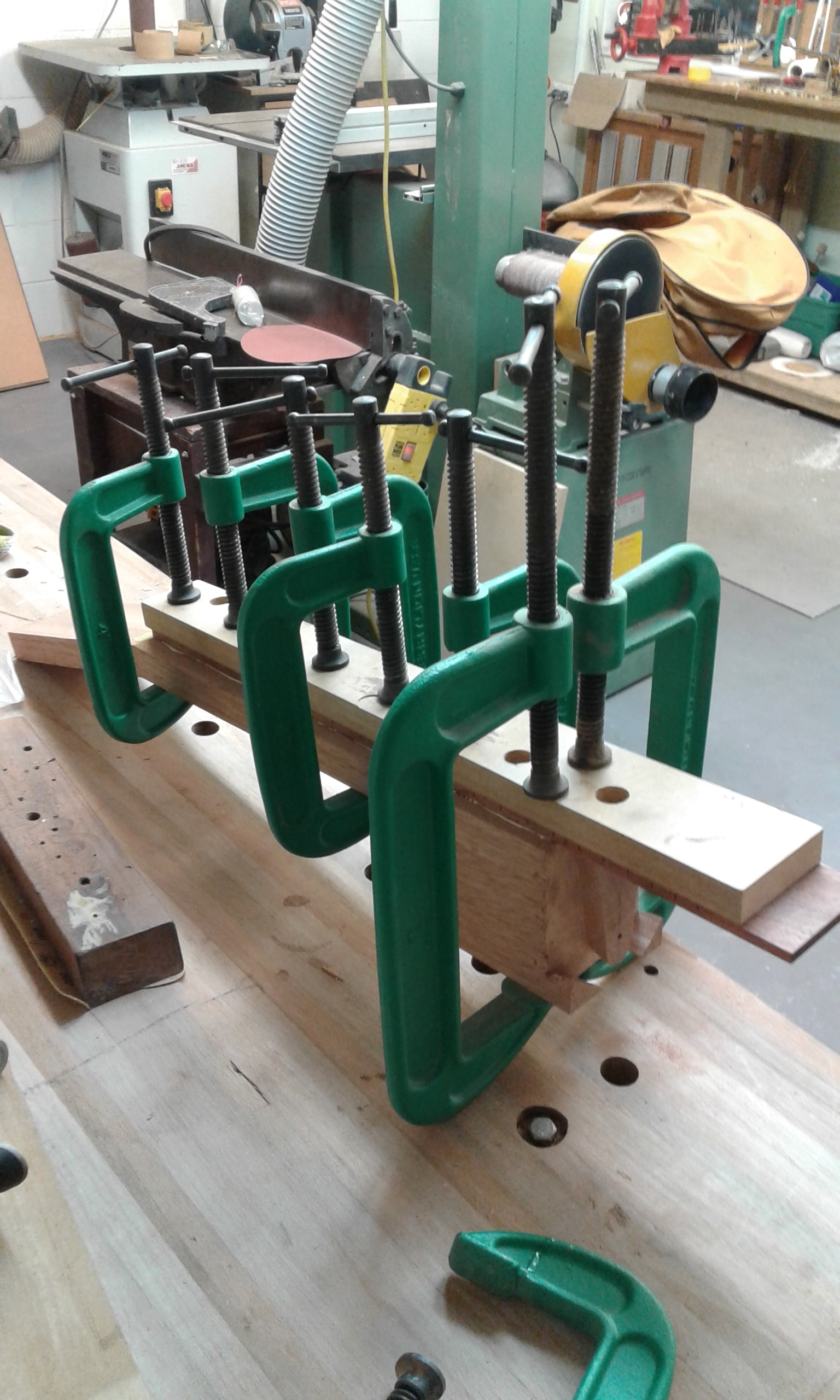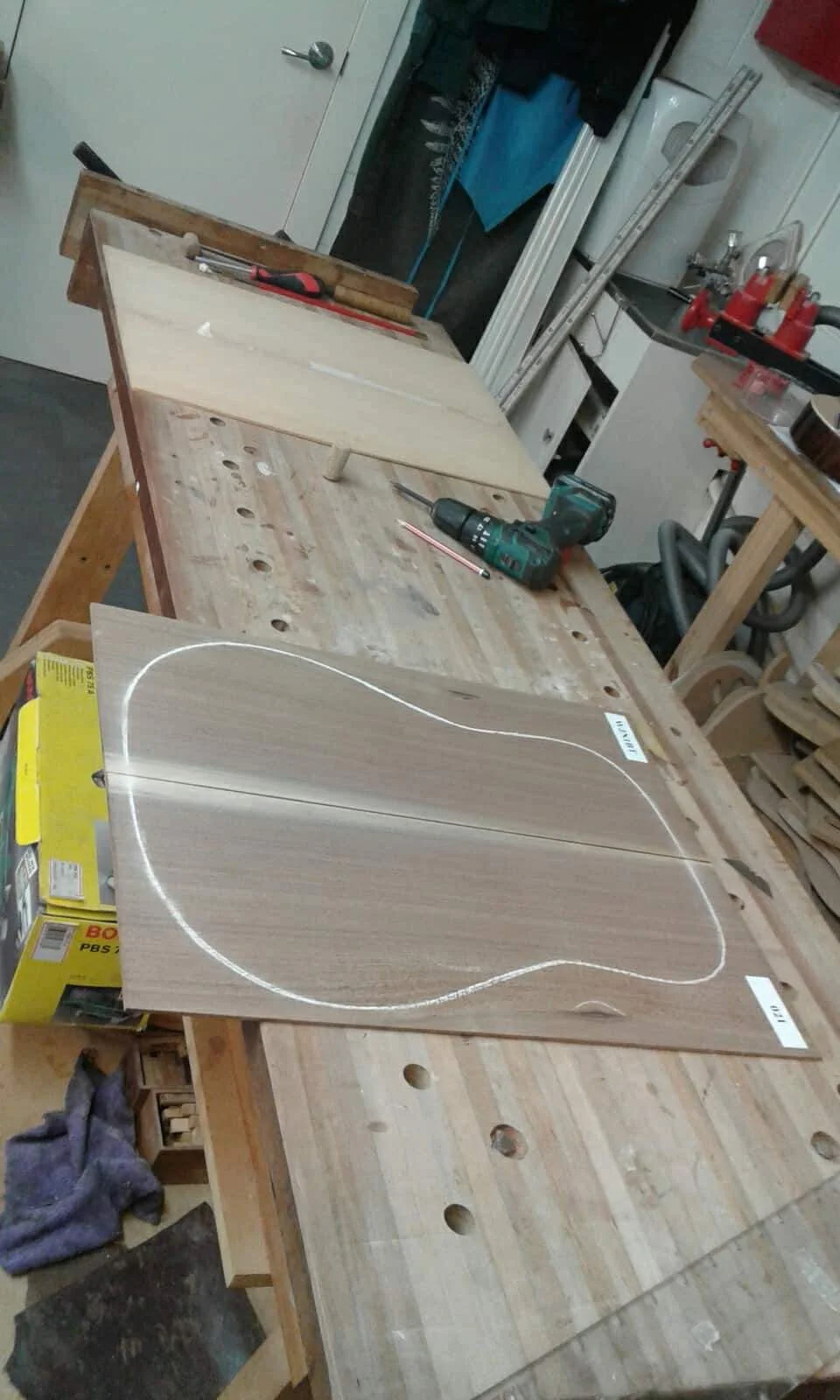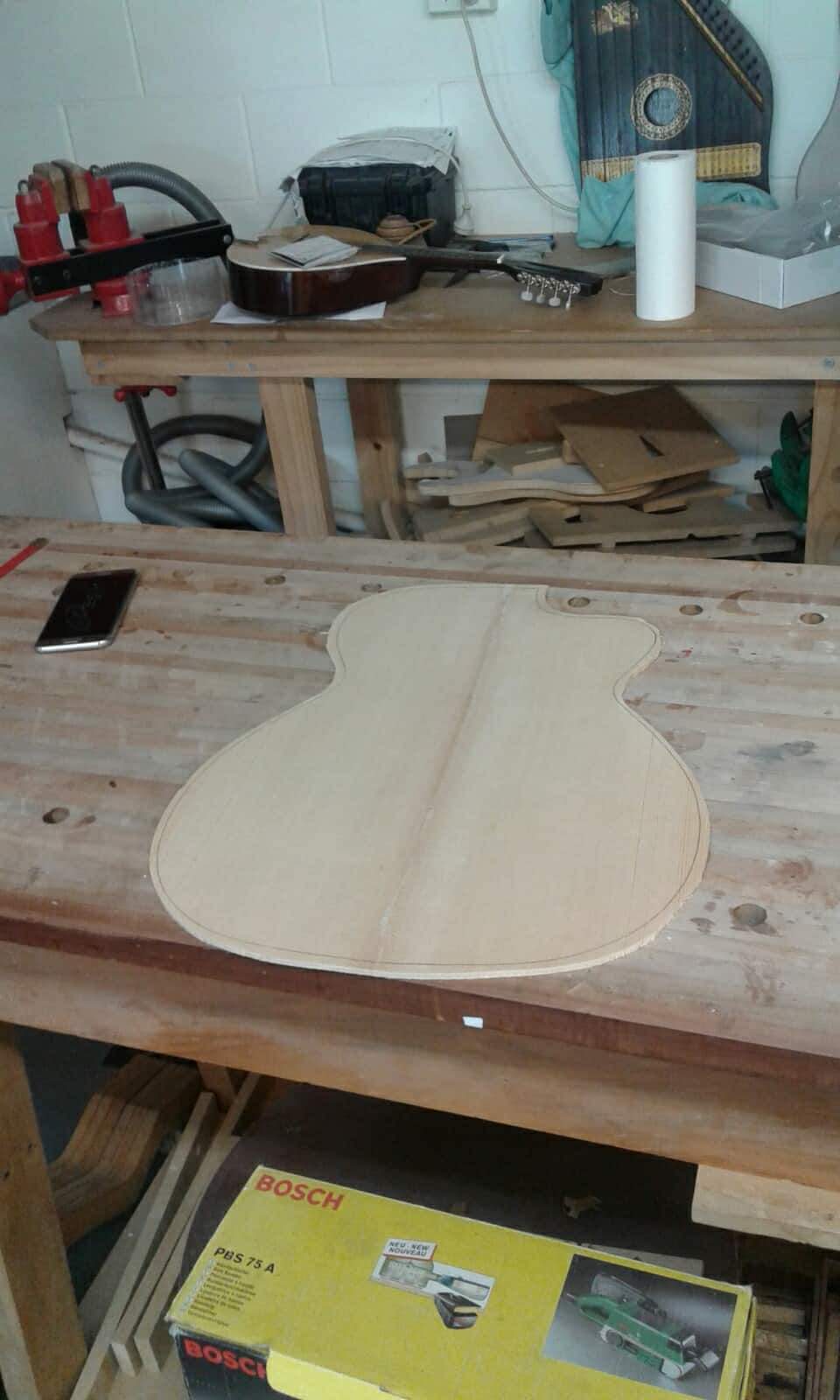I’m building a guitar, and logging the progress on the 7th of each month. Here are Months: One and Two
Session Nine
We are not alone. Another luthier-in-the-making is in tonight. His name is Chris, and this is not his first guitar build, but the vigor with which he describes his relationship to music doesn’t give you that idea. He’s been to Nashville (a dream destination for myself) and has growing children, each inheriting their father’s music bug. He tells me this while finishing some unknown step on the newest addition to his family (of guitars), which is a lot further along than mine, but is really encouraging to know I’ll be there soon enough. I’m happily gluing in some Lining, or Kerfing, to the inside of the Body, leaving space for some supports to be later glued in. During the session Chris is calibrating the placement of the Bridge, and to get it correct they need to thread on one of the strings and pluck it. Trevor pauses, addressing Chris with gravitas …
“This is the first sound your guitar will make”
It was beautiful.
Session Ten
The session is filled with more Kerfing, this time to the other side of the Body. When we eventually sandwich the Body between the Face and Back, this Kerfing will be what they hold onto. We break the session in the middle to speak about faceplates and symbols. I need to decide which wood to have on the Headstock, and I can choose between Rosewood to match the neck, or Walnut to match the Back and Body. There’s also a choice of what to put on the Headstock, as there’s typically a symbol or brand name up there. We’ve also started talking about bad movies, and how much we enjoy them. I recommend “The Lost Skeleton of Cadavra”, both to Trevor and to you. We end the session by drilling and gluing side-dots into the neck.
Session Eleven
I avoid scoffing at people who name their cars, because I’m one of those people who names their Guitars. I’ve already got a name, which will be revealed at the end of the whole process. But the two weeks since the last Session has been filled with a lot of googling. It’s good that I’ve had a break, because I’m finally able to decide on the symbol that I want on the Headstock. The fact that I want Rosewood was decidedly simpler. When I get in, Trevor celebrates my decisions, noting that he’s not come across the combination of Black Fret-Dots and Rosewood Headstock. I’ve created a monster. But at least it’ll be unique.
Having finished the Kerfing, I glue in side supports and, once dried, attach a small piece of Kerfing overtop to continue the pattern. We also cut to rough size the Rosewood Headstock Faceplate, attaching it to the Head of the Neck.

